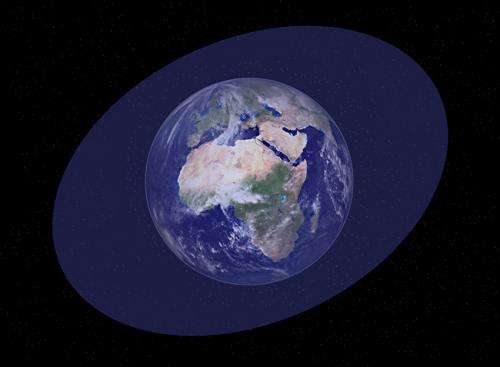A multi-model geoengineering assessment looks at potential climate effects

Climate geoengineering uses technology to temporarily reduce the effects of climate change by reflecting a small portion of sunlight back to space. As recently reported in Environmental Research Letters, an international team of scientists led by Pacific Northwest National Laboratory researchers used the output from climate models to evaluate which regions of the globe might be made "better" or "worse" by such geoengineering.
"We hope to further an open dialogue about geoengineering," said Dr. Ben Kravitz, atmospheric scientist at PNNL, who led the study. "What does geoengineering look like when different technologies are used? What climates could be achieved? What can geoengineering not do? And how will people be affected?"
Rising concerns about the climate's future have prompted research into using geoengineering techniques to temporarily alleviate some of the effects of increased carbon dioxide. Some proposed ideas include putting mirrors in space, injecting sulfur gas high into the stratosphere to mimic a volcanic eruption, and brightening low clouds over the ocean, all of which can affect the climate. But how would those effects change for different amounts of geoengineering, and how might they differ for different regions of the globe? This multi-model study is a major step toward understanding the potential effects of geoengineering.
Researchers from across the United States as well as Canada, China, Denmark, Germany, Japan, and Norway used the output from 12 climate models that form part of the Geoengineering Model Intercomparison Project, which seeks to understand the climate effects of geoengineering. These models represent different aspects of climate physics in slightly different ways. In the current study, scientists analyzed the simulated amount of geoengineering that would restore temperature and precipitation in 22 populated world regions to preindustrial values without making the climate of any region much worse off.
Climate researchers around the world will continue studying both climate change and the potential impacts of intervening through geoengineering so that governments can make informed decisions about the different options that can be used to address climate change.
More information: Kravitz B, D MacMartin, A Robock, P Rasch, K Ricke, J Cole, C Curry, P Irvine, D Ji, D Keith, J Egill Kristjánsson, J Moore, H Muri, B Singh, S Tilmes, S Watanabe, S Yang, and J-H Yoon. 2014. "A Multi-Model Assessment of Regional Climate Disparities Caused by Solar Geoengineering." Environmental Research Letters 9:074013. .
Journal information: Environmental Research Letters
Provided by Pacific Northwest National Laboratory











.jpg)





